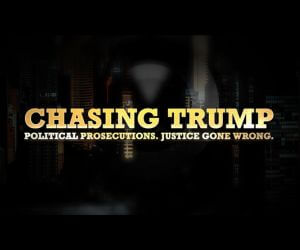Prosecutors in the Kyle Rittenhouse trial in Kenosha, Wisconsin, withheld video evidence that was allegedly “at the center of their case,” the defense team charged in their motion for a mistrial with prejudice. Defense attorneys Mark Richards and Corey Chirafisi filed the motion ahead of Monday’s closing arguments, asking for a mistrial based on prosecutorial misconduct, which means all charges are thrown out and the defendant cannot be tried again. The explosive document was released online Tuesday night.
Richards and Chirafisi say in their motion that prosecutors only shared the high-definition drone video footage with them after each side had rested.
“The video footage has been at the center of this case,” the defense motion states. “The failure to provide the same quality footage in this particular case is intentional and clearly prejudices the defendant.”
🚨BREAKING NEW MOTION: Kenosha prosecutors WITHELD VIDEO EVIDENCE from Kyle Rittenhouse Defense Team pic.twitter.com/pqk86hhqqu
— Jack Poso 🇺🇸 (@JackPosobiec) November 17, 2021
Cont'd pic.twitter.com/JJf97z5VSI
— Jack Poso 🇺🇸 (@JackPosobiec) November 17, 2021
Assistant District Attorney Thomas Binger played the enhanced drone footage for the first time during his closing statements, alleging that it showed Rittenhouse “pointing his gun” at agitators right before he shot Joseph Rosenbaum. The footage is key to the prosecution’s argument that Rittenhouse provoked the violence of the night of August 25, 2020.
https://t.co/GQ5klwoKlj pic.twitter.com/pQtjaArIos
— The Columbia Bugle 🇺🇸 (@ColumbiaBugle) November 17, 2021
Human Events reporter Jack Posobiec argued that the HD version of the video “clearly shows that Rittenhouse did not aim his gun at rifle at the Ziminskis.”
And here is the HD version that was withheld from the defense team
The HD version clearly shows Kyle did not aim his rifle at the Ziminskis pic.twitter.com/DQRxfhrlE1
— Jack Poso 🇺🇸 (@JackPosobiec) November 17, 2021
Richards and Chirafisi say that the state only shared this key piece of evidence with the defense on Saturday, November 13, after they could use it in Rittenhouse’s defense. The prosecution’s failure to share the video could constitute a Brady violation (meaning evidence that is favorable to a defendant was withheld during the trial).
In another example of prosecutorial misconduct, the defense team cited the moment during Rittenhouse’s testimony last week when Binger referenced the teen’s decision not to talk to police after being arrested. The right to silence is considered one of the accused’s most important protections, and defendants cannot be questioned on that at any point in their criminal case.
A furious Judge Bruce Schroeder sent the jury out of the courtroom, and unloaded on the prosecutors for possibly going “over the line ” into prosecutorial abuse, and warned them that there had better not be any more problems.
When the jury returned to the courtroom, Binger began another line of questioning that incurred the judge’s wrath for a second time, asking questions about whether Rittenhouse believed he could use his gun to protect property. When the defense objected, the judge excused the jurors again.
Schroeder furiously accused Binger of ignoring a pretrial ruling that barred him from mentioning a video shot weeks before the August 2020 shootings in which Rittenhouse allegedly talked about wanting to shoot people he believed were shoplifting from a local convenience store.
“I didn’t interpret your ruling to mean this is absolutely not coming in,” Binger said in his defense. “This is my good faith explanation to you.”
“I don’t believe you,” the judge responded. “There better not be another incident.”
The judge’s pretrial ruling had dealt a blow to the prosecutors’ strategy to portray Rittenhouse as a vigilante who came to Kenosha to impose his own sense of justice.
The defense motion asks the judge to impose the most severe punishment possible and dismiss the case with prejudice so Rittenhouse can’t be tried again.
“This record has bad faith on the part of the prosecutor,” the motion states. “We know that because he attempted to inform the court of his good faith basis for asking questions regarding inadmissible evidence and was told ‘I don’t believe you.’”
As of Tuesday, the state had not formally responded to the motion.
